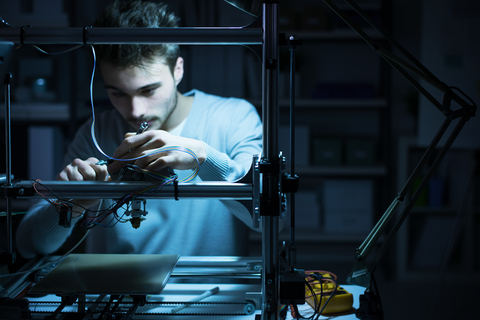3D printed cartilage successfully implanted in mice

Researchers at Chalmers University of Technology and Sahlgrenska Academy have successfully induced human cartilage cells to live and grow in mice, using 3D printing (Scienmag, 2017).
The results were recently presented in Plastic and Reconstructive Surgery Global Open.
“This is the first time anyone has printed human-derived cartilage cells, implanted them in an animal model and induced them to grow” said Paul Gatenholm, professor of biopolymer technology at Chalmers University of Technology.
Paul Gatenholm leads the research team working with the new biomaterial, based on nanocellulose, at the Wallenberg Wood Science Centre. He has been working with Lars Kölby, senior lecturer at Sahlgrenska Academy at University of Gothenburg and specialist consultant with the Department of Plastic Surgery at Sahlgrenska University Hospital.
The researchers printed a hydrogel of nanocellulose mixed with human-derived cartilage cells. They used a 3D bioprinter manufactured by Cellink, a Gothenburg-based startup firm whose bio-ink is a result of research by Paul Gatenholm. Immediately after printing, the construct was implanted in mice.
The researchers reported vascularisation between materials, and strong stimulation of proliferation and neocartilage formation by human stem cells.
Lars Kölby said “What we see after 60 days is something that begins to resemble cartilage. It is white and the human cartilage cells are alive and producing what they are supposed to. We have also been able to stimulate the cartilage cells by adding stem cells, which clearly promoted further cell division.”
Paul Gatenholm said “We now have proof that the 3D printed hydrogel with cells can be implanted. It grows in mice and, in addition, blood vessels have formed in it.”
He is careful to point out that the results he and Lars Kölby’s team are now able to report do not involve any shortcut to printed organs. He said “With what we have done, the research has taken a step forward towards someday, we hope, being able to bioprint cells that become body parts for patients. This is how you have to work when it comes to this kind of pioneering activity: one small step at a time. Our results are not a revolution – but they are a gratifying part of an evolution!”








